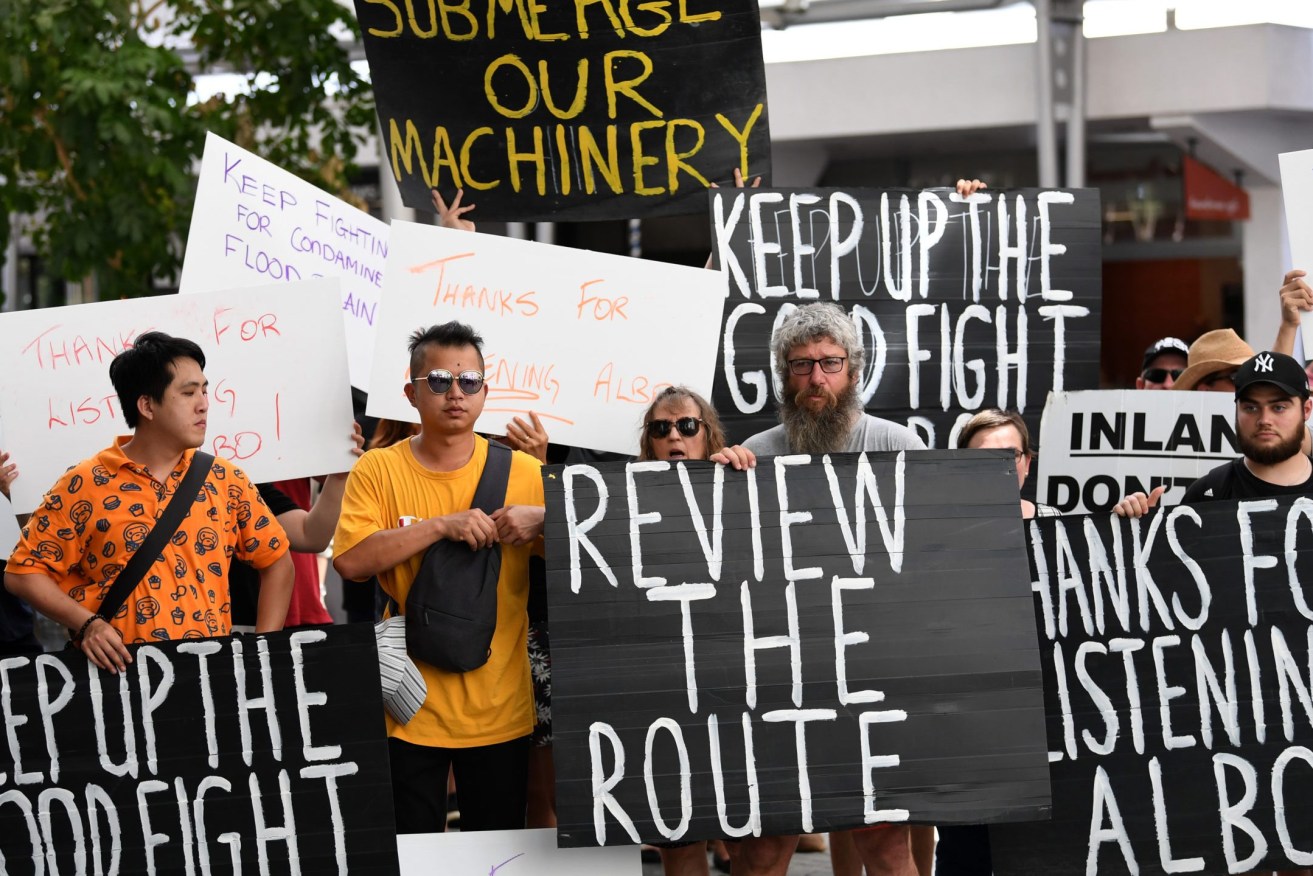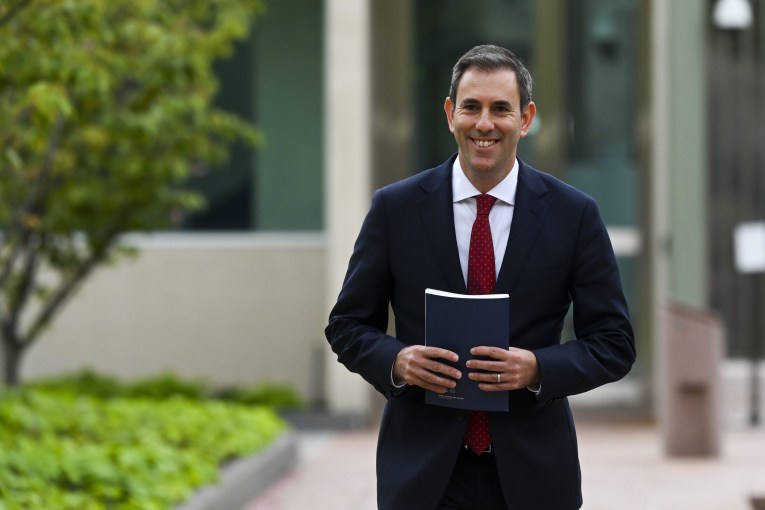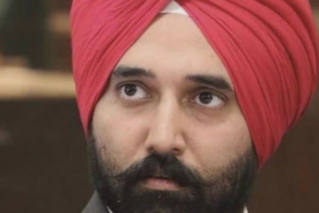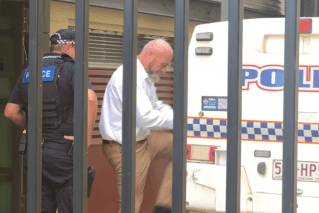Slow train running: Huge freight project’s future is split down party lines
Liberal National Party senators are sticking with the $14.3 billion Inland Rail project, despite a Labor-led committee finding a flawed business case led to a myriad of problems.

Farmers and rural residents from the Darling Downs region protested outside the Commonwealth offices in Brisbane last year. (AAP Image/Dan Peled)
After a long-running parliamentary inquiry, a Senate committee has made 26 recommendations to Commonwealth and State governments and the Australian Rail Track Corporation responsible for the Inland Rail project, which will provide a dedicated freight link between Victoria and Queensland.
The inquiry was chaired by Labor’s Glenn Sterle, with the Opposition party holding four of eight positions on the committee, and another two held by the Greens.
In its report, the committee repeated warnings that the cost of the project could exceed $20 billion, despite a 2015 business case that estimated it would cost $4.5 billion and a recent injection of Commonwealth funds.
“It is apparent to the committee that the original costings and allocated budget for Inland Rail was inadequate from the outset, and is a failure on behalf of the Australian Government and the Australian Rail Track Corporation to appropriately prepare, plan and implement Inland Rail,” the report states.
“The committee’s concern about the cost of Inland Rail, driven by warnings that further cost blowouts may occur as the Inland Rail project progresses, warrants a dedicated oversight mechanism to be established throughout the project’s construction.”
The recommendations most likely to be supported by the Morrison Government would see new working groups and stakeholder groups established to facilitate and oversee the project, including the planned route into Brisbane and use of intermodal facilities
There would also be more regional forums, the public release of business cases currently under preparation, and better integration with rail, freight and transport networks. However, Labor’s bid to force an update of the 2015 business case has already been opposed by the Liberal National Party.
The proposed route through Queensland, and lack of a Brisbane port connection, has caused concern in some communities, leading to pressure on local MPs and Senators to find a more workable solution.
The two LNP senators on the committee, including deputy chair Susan McDonald, disagreed with four of the recommendations and added their own comments to the report, where they suggested “Labor has been determined to derail Inland Rail from the start”.
While the Morrison Government has yet to consider the project, let alone provide a formal response, the LNP senators argued the project must be completed to reduce traffic congestion on major road networks, enhance freight capacity, and boost the economy.
“Inland Rail is a vital piece of national infrastructure and critical to advancing opportunities for regional Australia,” they wrote.
“It is expected to support more than 21,500 jobs at the peak of construction, and to date, more than 2000 people have already worked on the inland rail construction. More than $2 billion in contracts with more than 400 companies has been committed. Inland Rail will deliver a boost of more than $18 billion to Gross Domestic Product during construction and in the first 50 years of operation.”
The ARTC’s Rebecca Pickering, interim chief executive of Inland Rail at the ARTC, today acknowledged the contributions of many individuals and organisations who had participated in the inquiry.
“ARTC recognises that the issues investigated by the Committee are matters of great interest for the freight and rail industry and for communities, particularly those who reside in regional and metro areas along the Inland Rail alignment,” Pickering said.
“We have heard the call from stakeholders who expected more from our early engagement on Inland Rail and we have continued to improve as the project progressed.
“Building Inland Rail is about working together and our priority is to continue to work with landowners, key stakeholders and government through respectful engagement and consultation.
“We will ensure continued improvements are implemented as Inland Rail is designed and constructed so that Australians can access the significant jobs and economic benefits of this national infrastructure.”









